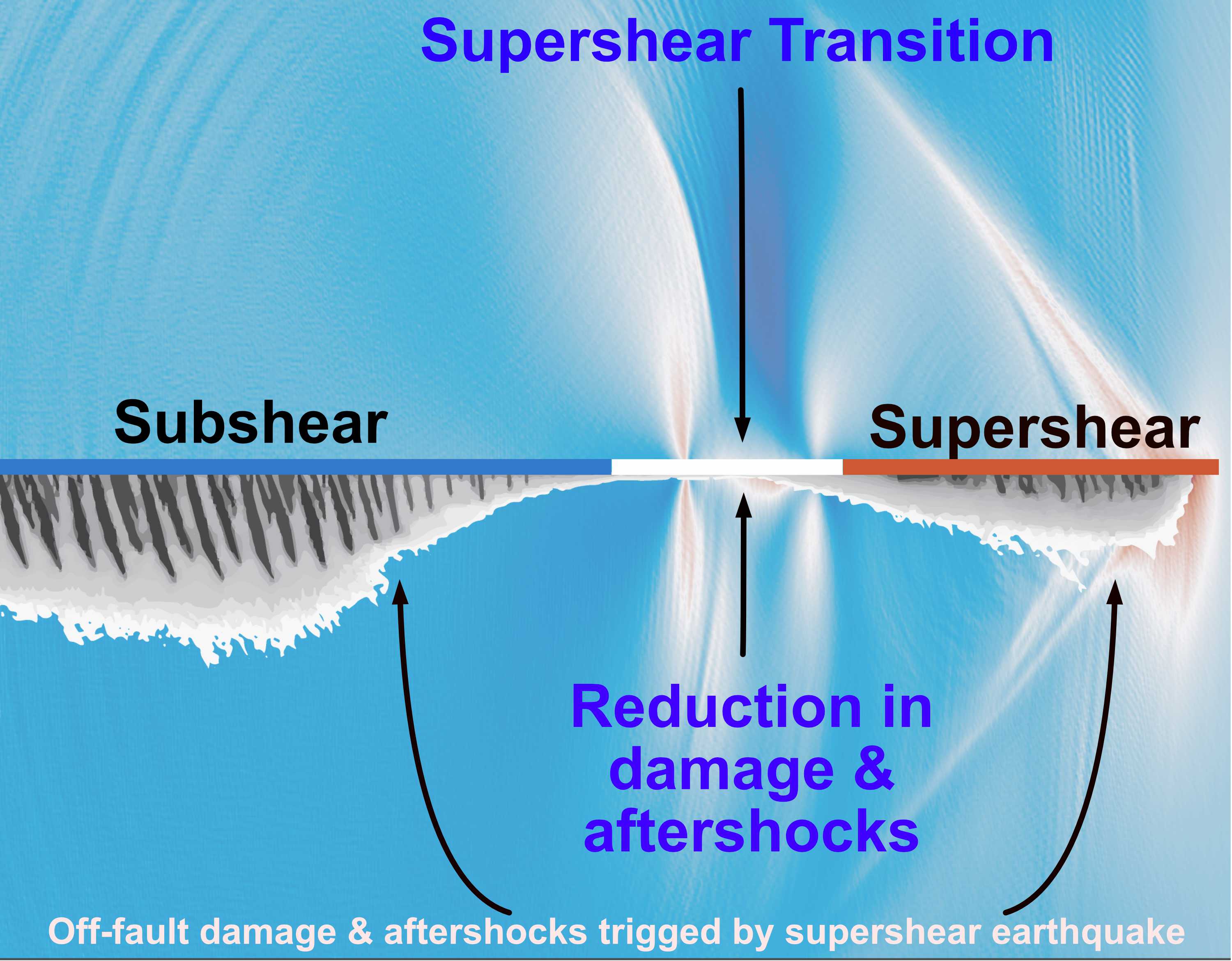Signature of transition to supershear rupture speed in coseismic off-fault damage zone
Proceedings of the Royal Society A.

Scientific Summary
Supershear earthquakes are the rarest type of earthquakes. They occur when the speed of the earthquake (4 to 5 km/s) exceeds the shear wave speed (3.5 km/s) of the host rock. This is very much like a supersonic aircraft that exceeds the speed of sound. When, and how long, an earthquake ‘transitions’ to supershear speed is very hard to observe in nature, laboratory earthquakes and numerical models.
In this pioneering, multi-disciplinary, work we provide a robust signature to observe such a supershear transition in nature. Combining theoretical models of dynamic fracture, advanced computational models of earthquakes and state-of-the-art observation techniques we conclusively show that the best signature of supershear transition is not “on” but “off” the fault hosting such an earthquake.
We first start with an idealized model of an earthquake and develop conclusive theoretical arguments to show that the stress felt by the medium surrounding a fault gradually diminishes as the earthquake speed approaches the shear wave speed. For brittle materials like, rocks, this means they are less likely to fracture. We thus predict that around supershear transition zone we should see less fractures off the fault. Using advanced computational models, we then validate this prediction. Based on these predictions we now re-visit multiple earthquakes that have gone supershear and look for this reduction in off-fault fractures (damage zone). Using satellite image correlation techniques, that can infer the damage zone, and aftershock distribution, that illuminate this zone indirectly, we conclusively verify the predictions of the models.
Thus, when an earthquake transitions to supershear speed on the fault it will result in reduction in fractures off the fault making it a previously unrecognized evidence left by an elusive supershear earthquake.
Jara, J., Bruhat, L., Thomas, M. Y., Antoine, S., Okubo, K., Klinger, Y., Jolivet, R., & Bhat, H. S. (2021). Signature of transition to supershear rupture speed in coseismic off-fault damage zone. Proc. R. Soc. A., 477, 20210364. doi: 10.1098/rspa.2021.0364